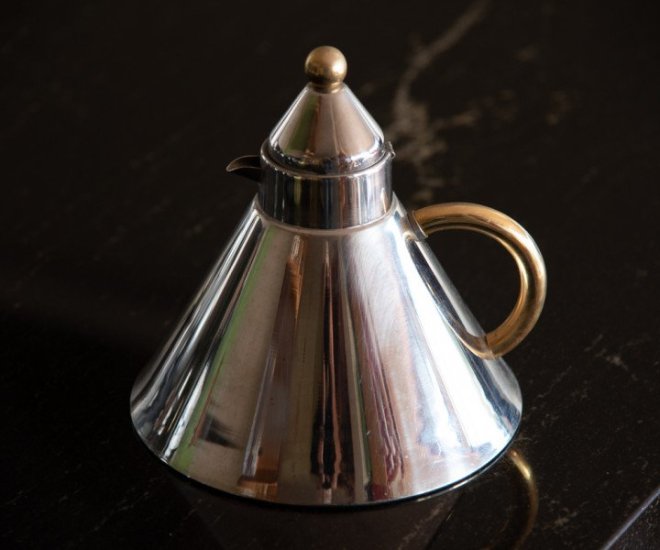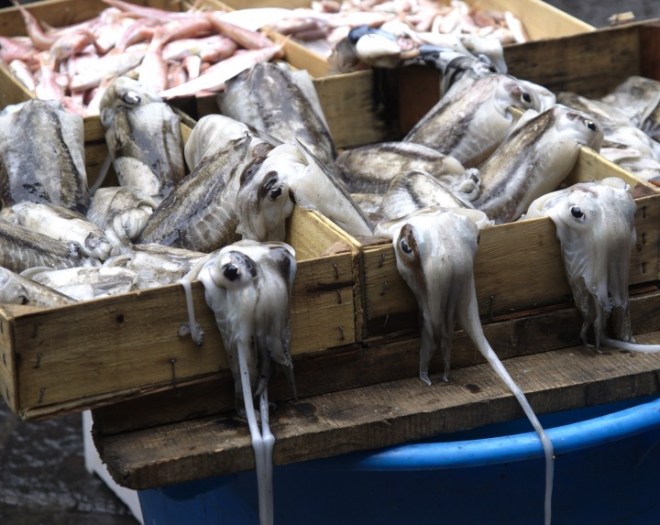Late last year, I was contacted by Massimiliano Gugole from SBS Radio and asked if I would like to contribute to an SBS program on Season 2 of The Ugly Ducklings of Italian Cuisine. 
The idea of the program is to showcase nice tasting but nasty looking Italian dishes. Massimiliano wanted to interview me about a particular dish from South Eastern Sicily that starts out looking gruesome but ends up tasting glorious. I think he must have found me through a recipe I posted on my blog about this particular dish, which one of my aunts used to make when we visited Ragusa for our Sicilian summer holidays.

My recipe and the Ugly Duckling interviews in English and Italian are entitled Zuzzu, described on the SBS website as an ancient, pork terrine that uses everything of the pig, but the oink!
I mentioned to one of my friends in Canberra that I had been interviewed for this program and with his wicked sense of humour said: “Surely the ugly duckling reference has got nothing to do with you!”
Here’s what SBS had to say about Season 1 followed by Season 2:
About Season 1
SBS has today launched its first ever bilingual podcast series – The Ugly Ducklings of Italian Cuisine (Scarrafoni in cucina) in English and Italian – celebrating the most delicious, non-Instagrammable Italian dishes that might never have come across your plate.
Over the course of six episodes, the series will follow some of Australia and Italy’s most well-known chefs and food critics, including acclaimed restaurateur and food personality Guy Grossi, celebrity chef Poh Ling Yeow, and food blogger and author Emiko Davies, as they explore and celebrate Italy’s least appetizing specialties.
Podcast host Massimiliano Gugole, from SBS Italian, said: “Italy is a country of beauty, with its food celebrated all over the world, but this podcast will introduce listeners to some of our lesser-known culinary treasures, with a healthy dose of irony thrown in for good measure.

About Season 2
SBS’s first bilingual podcast is back for seconds! Season Two of The Ugly Ducklings of Italian Cuisine (Scarrafoni in Cucina) returns in Italian and English to introduce six new dishes for the adventurous eater such as sea urchin gonads, stew with chocolate and wild boar, and risotto with a stinging weed.
A line-up of new guests will share their expertise in the world of Italian food including award-winning Melbourne chef Alberto Fava, Sicilian food truck owner Pino D’Addelfio, TV chef, author and former Food Director of Australian Women’s Weekly, Lyndey Milan, and the inimitable queen of TV cooking, Nigella Lawson.
SBS Italian Producer Massimiliano Gugole said the podcast started from a love of weird and wacky food.
“During the first season I talked about a typical dish from Verona – pearà. Not even people from neighbouring cities knew about it. When they saw a picture, they thought it looked like vomit but I, like all Veronese, love it!” said Gugole.
Looking past the superficial, Season Two of The Ugly Ducklings of Italian Cuisine will delve deeper into how these unique, local dishes became a proudly acquired taste.
“These dishes are not the celebrities – the pizzas and pastas – but they have strong links to families, towns and history. My intention is to tell their stories,” Gugole said.
“On Instagram, all food is perfect: perfect framing, perfect garnishes, but my research shows that’s not what makes food delicious. Nigella Lawson even once said, ‘brown food tastes the best’.”
Episode three in English features TV cooking royalty Nigella Lawson, who talks about stinging nettle risotto and her special relationship with 98-year-old Italian-British food writer Anna Del Conte. Lawson cites Del Conte as her only culinary influence, apart from her mother. In the Italian version of this episode, we hear from the doyenne herself, Anna Del Conte.
Conte and Lawson join guests including blogger and Instagram sensation Emiko Davies, environmental scientist and sea urchin expert Dr Paul Carnell, Italian food writer Chiara Cajelli, and research scientist Dr Maurizio Rossetto from the Royal Botanic Garden Sydney, as well as restaurateurs from Italy and Australia, university professors, medieval food fanatics and more.
The podcasts in both season 1 and Season 2 are worth listening to and are very entertaining.
BS Italian Executive Producer, Magica Fossati, says differences between the Italian and English episodes on the same topic are an interesting by-product of having the same conversation with bilingual guests, but both versions are worth listening to as they complement each other.
“I heard some Italian language teachers recommended our first season to their students because it’s easier to understand and study Italian with English context,” she said.
Both English and Italian speakers can look forward to hearing a fresh perspective on the world of lesser-known Italian dishes in season two, available on the SBS Radio app and SBS Italian website. Episode one launches on February 1, recipes for the dishes featured in the series can also be found on SBS Food.
My recipe of Zuzzu and is in Italian and English.
I have listened to both podcasts about Zuzzu.
The Italian version is different to the English. One happened before anyone ate it, the other after people tasted it. The Italian version is probably more amusing and includes commentary from Lisa Ferraro, who used to live in Melbourne and one of the two who instigated Bar Idda, a Sicilian restaurant in Brunswick East, Melbourne. Lisa now lives in Rome and organises travel tours in Sicily.
Compliments to Massimiliano Gugole who did an excellent job interweaving other speakers in the interviews.
Listen or follow The Ugly Ducklings of Italian Cuisine in the SBS Radio app or your favourite podcast app, to hear all episodes in the series.
Find a collection of recipes featured in the first series on the
SBS Food website, including this recipe for my Sicilian pork terrine (Zuzzu)
Here are some photos about the preparation of Zuzzu:

The head

The head in the pan

The boiled meat drained


The different parts of meat, separated (2 photos above)


Dealing with the jelly (2 photos above)


Dealing with the terrine (2 photos above)

A tasty sauce to pour on top of the Zuzzu or to serve with it, can be made with a mixture of chopped parsley, extra virgin olive oil, some lemon juice, salt and either pepper or chili flakes. At times, I also like to add a few chopped leaves of fresh garlic or mint in mine, but this is optional. The dressing can be as thick or as thin as you wish to make it.
Links:
https://www.sbs.com.au/language/italian/en/podcast/the-ugly-ducklings-of-italian-cuisine
https://www.sbs.com.au/language/italian/en/podcast-episode/zuzzu-an-ancient-sicilian-pork-terrine-that-uses-everything-but-the-oink/okrixs5gn
The recipe has been called Pork Terrine…. not quite right, but maybe no one would look at a recipe mad with pig’s head. Brawn may have been a better title.
https://www.sbs.com.au/food/social-tags/ugly-ducklings
My original posts about this dish:
GELATINA DI MAIALE. Pork Brawn
GELATINA DI MAIALE and HAPPY BIRTHDAY BAR IDDA (Buon Compleanno Bar Idda).
Like this:
Like Loading...

































































































